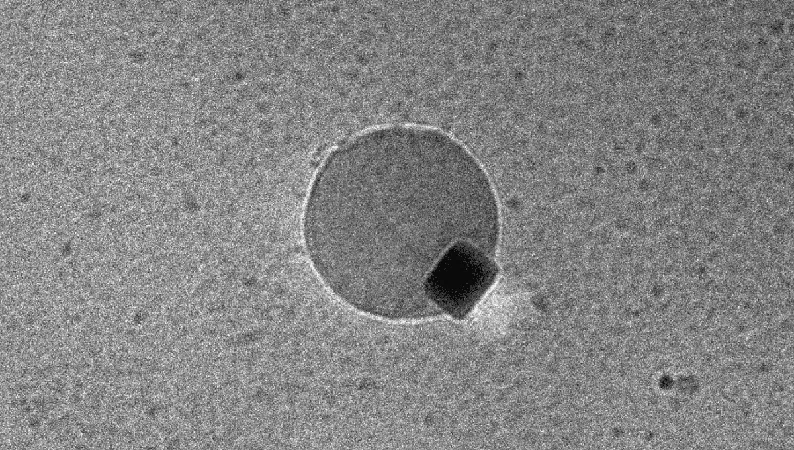
BepiColombo's Stunning Mercury Flyby: Unlocking Secrets of the Solar System's Smallest Planet!
2024-10-03
Introduction
The BepiColombo spacecraft might just be zipping by Mercury at incredible speeds, but its brief encounters are revealing an astonishing array of discoveries about our solar system's innermost planet. The mission, a collaborative effort between the European Space Agency (ESA) and the Japan Aerospace Agency (JAXA), is set to truly dive into Mercury's orbit in 2026. However, before that milestone can be achieved, the spacecraft is conducting several vital flybys of Mercury, Venus, and Earth, creating a scientific treasure trove along the way.
Recent Discoveries
In one of its recent flybys in June 2023, BepiColombo gathered groundbreaking data on Mercury's magnetic field, an area of great intrigue for scientists worldwide. This magnetic field acts as a protective shield, safeguarding the planet from the relentless solar wind, similar to how Earth’s magnetosphere provides us shelter. Yet, experts are puzzled as to why Mercury's magnetic shield is significantly weaker than ours.
Being much closer to the sun—about 36 million miles away compared to Earth's 93 million miles—Mercury experiences harsher solar winds. This unique proximity poses intriguing questions about how Mercury’s magnetic bubble interacts with these intense solar forces.
Mission Objectives
One of BepiColombo's prime missions is to dissect this interaction, offering a panoramic view of Mercury's magnetic environment. The spacecraft is equipped with two distinct units: the ESA-managed Mercury Planetary Orbiter (MPO) and the JAXA-led Mercury Magnetospheric Orbiter (MMO). Together, these components promise to create a full picture of the mercurial surroundings and the ongoing solar interactions.
Insights from Flybys
During its rapid flybys, which see the spacecraft traverse the planet’s magnetosphere in as little as 30 minutes, scientists like Lina Hadid have collected invaluable insights regarding the particle types and temperatures within this magnetic landscape. They have not only observed the anticipated boundaries between solar wind and magnetosphere but also stumbled upon unexpected phenomena that have further piqued their curiosity.
Utilizing BepiColombo's Mercury Plasma Particle Experiment (MPPE), the research team revealed fascinating details about the particles and features comprising Mercury's magnetic bubble. They identified both expected structures—such as the 'shock' boundary where the solar wind meets the magnetosphere—and unforeseen findings. Notably, they discovered a turbulent plasma boundary boasting the highest energy levels recorded at Mercury so far.
Energetic Ions and Ring Current
The investigation took an intriguing twist when scientists detected energetic ions at low latitudes, hinting at a ring current, a phenomenon generated when charged particles are trapped by a planet's magnetic field. Due to the compactness of Mercury’s magnetosphere, this raises significant questions about how such currents can form so close to the surface.
Challenges and Findings
Continuing their analysis, the team explored interactions between charged solar wind particles and the plasma enveloping both Mercury and the BepiColombo spacecraft itself. A notable challenge arose when the spacecraft faced the sun, rendering certain particles undetectable due to electrical repulsion. But once BepiColombo shifted into Mercury's shadow, scientists were able to detect cool ions, revealing traces of elements like oxygen, sodium, and potassium. These particles are believed to have originated from Mercury’s surface, propelled into space by meteorite impacts or solar winds.
"It's as if we're viewing the surface's material composition in a thrilling 3D array through the planet’s incredibly thin atmosphere," exclaimed Dominique Delcourt, lead of the MPPE instrument. "We're beginning to link the planet’s surface to the plasma surrounding it—an exhilarating prospect!"
Future Flybys
In this initial sweep through Mercury's magnetosphere, scientists have only begun to scratch the surface of what they might discover. And with more flybys scheduled—as soon as December 1 and January 8, 2025—the BepiColombo mission is poised to continue unveiling the mysteries shrouding the fascinating terrain and magnetic characteristics of Mercury.
Concluding Thoughts
What groundbreaking revelations will the next flybys bring? Stay tuned as we uncover the secrets of the solar system's enigmatic tiny planet!



 Brasil (PT)
Brasil (PT)
 Canada (EN)
Canada (EN)
 Chile (ES)
Chile (ES)
 España (ES)
España (ES)
 France (FR)
France (FR)
 Hong Kong (EN)
Hong Kong (EN)
 Italia (IT)
Italia (IT)
 日本 (JA)
日本 (JA)
 Magyarország (HU)
Magyarország (HU)
 Norge (NO)
Norge (NO)
 Polska (PL)
Polska (PL)
 Schweiz (DE)
Schweiz (DE)
 Singapore (EN)
Singapore (EN)
 Sverige (SV)
Sverige (SV)
 Suomi (FI)
Suomi (FI)
 Türkiye (TR)
Türkiye (TR)